When Do Babies Start Crawling?
“When will my Baby Start Crawling?” is the first question that hits every mothers head & heart when her baby is almost 6 months. Crawling is not only the baby’s first step toward independent mobility but is also huge milestone in baby’s developmental growth.
Crawling is the first activity baby does himself so it is considered to be huge milestone in baby’s physical development. When your baby starts going around, a new world open up for him as he will start exploring new areas leading to complex movements, like standing up, walking and finally running. Your baby will start exploring everything in reach once in motion. Make sure to go for a second check about the entire Baby Proofing part you have done because it is always good to be extra cautious. Cover the floor with soft carpet, so that baby’s little knees do not get hurt by hard surfaces.
When does Baby Starts Crawling? 
Generally babies begin to crawl between 6-10 months, there are many who skip crawling phase and straight away enter pulling, cruising & walking. Help your little one to make his solo moves as it is a big achievement toward independent mobility.
How to help baby Crawling, Cruising & Walking?
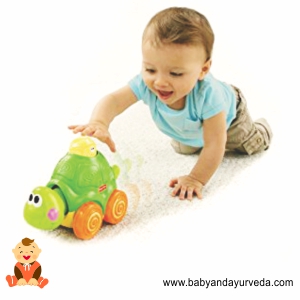 Crawling
Crawling
Baby starts to Wiggle & Stretch, Push up and take off at the age of 6 to 10 months. Crawling is the first step toward independent mobility but some babies skip crawling completely and directly enter the next phase.
- You can help your baby to develop crawling coordination by baby proofing the room with cushions & soft toys so that he can crawl over, under & through them.
- Play some music, dance on some beats. He will start mimicking you soon.
Cruising 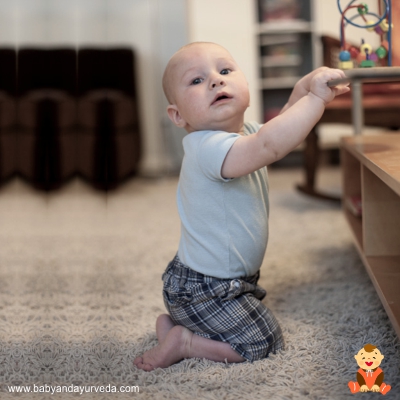
As soon as, your baby will learn to stand & maintain balance (between 8-13 months), he will start discovering newer areas by probably taking steps by holding on to the furniture. Usually baby drags her feet sideways & then start picking her legs. To make you little bundle of joy closer to walking make these little efforts:
- Bring furniture together so that he can make his way to different areas
- Make him stand on your lap, and slowly move each of your leg up & down so that he learns how to shift his weight.
Being able to get around by himself, opens up a new world to your baby giving him a great sense of enthusiasm, accomplishment & power.
Walking 
Between 9 to 14 months, you baby will start taking his first steps. He might be uneasy in the beginning, but to ease this.
- Let him go barefoot so that he can balance easily.
- Play with your baby. Stand feet away from him, holding his favorite toy. He will start approaching you to grab it. With practice he will learn to balance also.
Baby Motor development & Milestones: Gross Motor, Visual spatial and Cognitive Skills 
Crawling might seems to be a very easy & minor thing but is a tough job for the baby as it requires the use of both mind & body. For a baby to start Crawling and learning how to maintain balance firstly requires the muscles of her back, neck, shoulders, arms and core must be strong enough to support his weight and help to maintain balance. Baby uses his binocular vision to focus target and develop depth perception. Your baby’s mental muscles also get workout. After your baby start crawling, his navigation skills start developing and he also memorizes facts by now. For instance, they know where their basket of toys is placed and how to reach there. Crawling requires a lot of strength from baby side so regular massage is must for the baby to stay strong and active. Sesame based Oil is considered to be the best for baby’s muscles and bone development. It improves blood circulation and keeps the protective layer of baby’s skin healthy and nourishes it. Mother Sparsh Lal Tail is Sesame based oil containing herbs like Shankhpushpi and Ratanjot is highly preferred for baby massage.
Crawling Milestones: Different Baby Crawling Styles
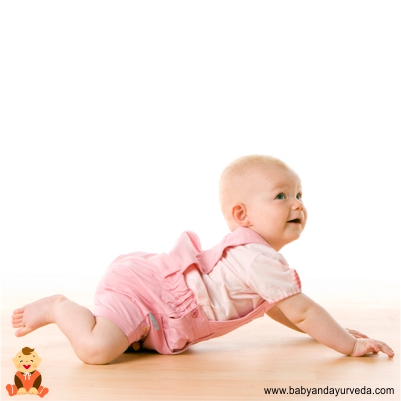 Commando Crawl: Also known as “belly crawl”. Your little one may Begin Crawling by Creeping- keeping belly and legs down on the floor and pulling himself forward with the help of arms.
Commando Crawl: Also known as “belly crawl”. Your little one may Begin Crawling by Creeping- keeping belly and legs down on the floor and pulling himself forward with the help of arms.
Bottom Scoot: When your baby is learning to crawl, he may try bottom scoot by slightly sliding his bottom along the floor and the will use legs to pull himself forward.
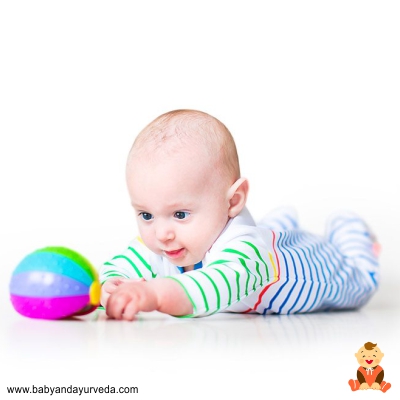 Classic Crawl: From belly baby pushes himself on his hands and knees hence moving by alternating opposite leg and arm forward.
Classic Crawl: From belly baby pushes himself on his hands and knees hence moving by alternating opposite leg and arm forward.
Roll: Baby keep rocking back and forth, until he gets the hang of forward motion.
Tripod Crawl: In this style baby moves with two hands and one knee doing the work while the second leg takes it easy.
The Bear Crawl: Here the baby straightens up his legs and the behind lifted up in the air, baby waddles along his hands and feet.
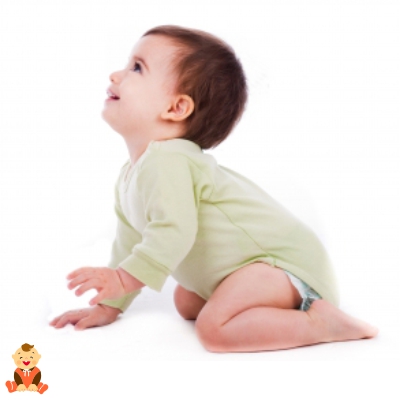 The Leapfrog: The baby gets into hand and knee bridge pose and moves by thrusting himself forward just like yoga moves.
The Leapfrog: The baby gets into hand and knee bridge pose and moves by thrusting himself forward just like yoga moves.
The Crab Crawl: In this the baby uses his arms to push himself backward instead of forward.
You may also check – Amazing Benefits of Baby’s Crawling
When do Babies Crawl? If you have any other information to add on, then please add in comments.
Related Posts:
Tags: Average Age For Babies To Sit Up., Baby Crawling, Baby Crawling At 4 Months, Baby Motor Development, Baby Physical development, Benefits Of Crawling, Crawling, Crawling milestones, Cruising & Walking?, Different Baby Crawling Styles, How to help baby Crawling, When Do Babies Crawl, When Does Baby Starts Crawling
Category: Baby Care, Baby Health, Baby Health Tips
January 24, 2017 · Baby and Ayurveda · 7 Comments
7 COMMENTS
Leave a Reply Cancel reply
Recent Posts
- How to Soothe a Baby after Vaccination?
- Which Nutritional needs are important to take during pregnancy?
- Things to know about Baby Safety Inside Home
- Why Should You Eat Chocolate in Pregnancy? Know the Reasons Here!
- A Precise Nutrition for Healthy Growth of School-Going Children
- Home Remedies that will Provide Your Child Enough Relief in Fever
Categories
About
Welcome to BabyandAyurveda.com – India Parenting Blog. We are here to help all the parents to raise healthier & happier babies and enjoy every chunk & bit of this beautiful phase called “Parenthood” blessed by Almighty.






[…] coordination, neck strength and head control which are must for walking also. Baby learn to crawl between the age of 7 to 10 months (some skip this activity and directly start to […]
[…] his own and crawl. Between the time period of 6 to 8 months most babies masters sitting technique, crawling comes […]
[…] walking is an important move toward attaining independence in mobility. Sitting, Rolling and Crawling gives baby enough confidence to take steps […]
[…] improves, but everything far away even appeared to be about at the same distance. After learning crawling milestone, he gets the idea how far the object really is. The more crawling it takes to reach the thing, the […]
[…] Proofing Products and baby proofing ideas are needed when your baby starts crawling as it simply means counter and other surfaces are within his reach now. You’ll notice he’ll go […]
[…] your baby is ready for achieving milestones of baby development like sitting up, rolling over, Crawling etc. Head control is must for swallowing solid […]
[…] case you have not noticed any flip till 6 months or he has not made any effort to sit or crawl. Let you pediatrician know about […]